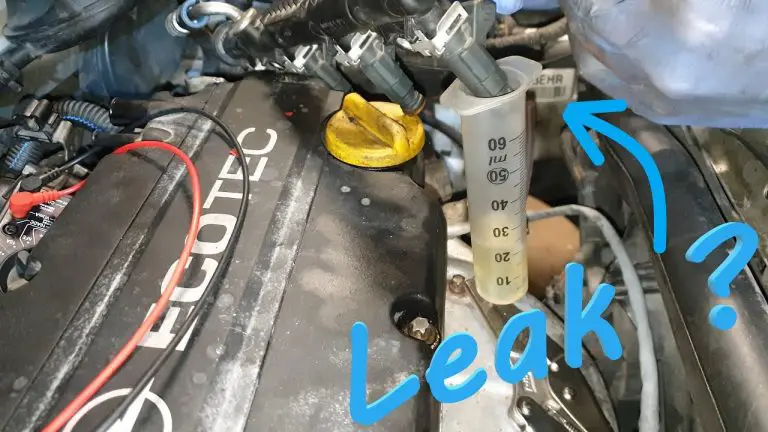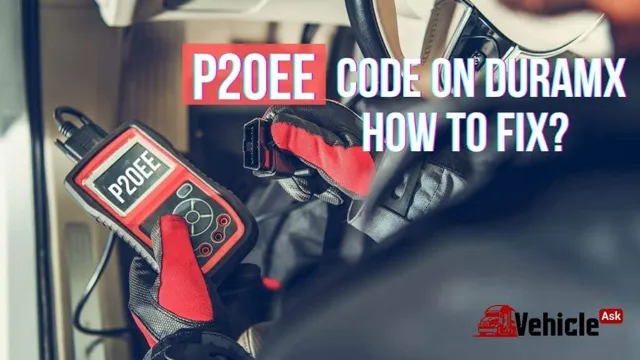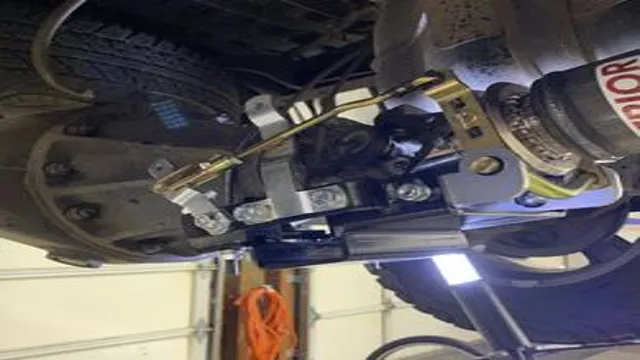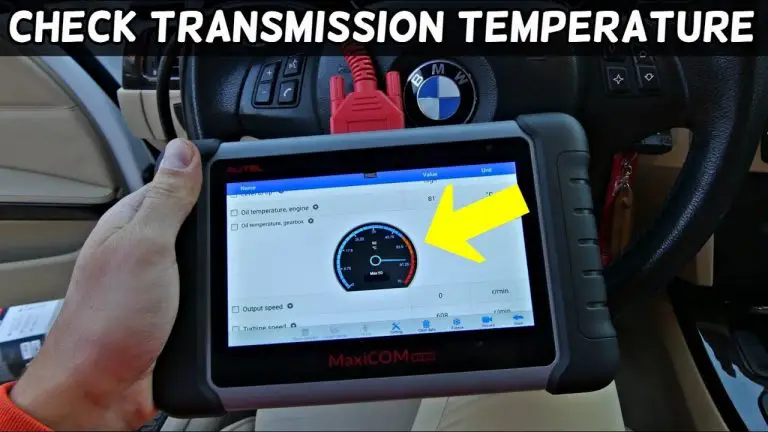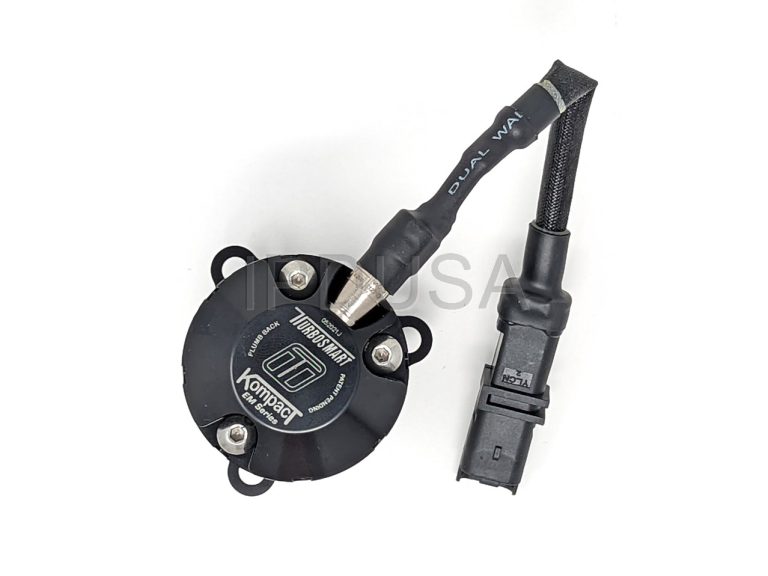Unleashing the Power: A Complete Guide on How to Jump Start Your 24V System
Jump-starting a 24V system could be a daunting task, especially when you’re not familiar with the process. Don’t worry though, it’s not as complicated as it seems. In essence, it involves using external power to start the system when a battery has died.
Whether you’re trying to revive a truck, tractor, or other heavy-duty equipment, knowing how to jump-start a 24V system is critical. With that said, it’s essential to understand the basics of the system, such as its power requirements, polarity, and safety measures. By doing so, you’ll be able to jump-start your 24V system safely and without causing any damages.
Safety Precautions Before Jump Starting
Jump starting a 24v system requires some safety precautions to ensure that the process goes smoothly and without any incidents. Before attempting to jump start your system, it’s important to turn off the ignition and all electrical accessories to avoid any sparks. Also, make sure that both vehicles involved (the one with the dead battery and the one providing the jump) are parked facing each other with enough distance between them.
Then, verify that the batteries have the same voltages to avoid any damages to the electrical systems. Once both vehicles are ready, connect the jumper cables to the positive and negative terminals of the dead battery and the live battery, respectively, making sure the cables are not touching each other during the process. Finally, start the engine of the live vehicle, wait a few minutes, and try starting the engine of the dead vehicle while keeping the revs high on the live vehicle.
Following these safety guidelines will ensure that you jump start your 24v system without causing any harm to yourself or your vehicle.
Check Battery Condition
When preparing to jump start a vehicle, there are a few safety precautions you should take to ensure that you and your vehicle stay safe. Firstly, check the battery condition of both vehicles. A damaged or leaking battery could cause serious harm if not handled properly.
Make sure that the battery terminals are clean and that there is no visible damage. Next, ensure that the cables you are using to jump start are in good condition and not frayed or damaged. It’s also essential to wear protective clothing and gloves to protect yourself from any potential electrical harm.
Always park both vehicles in a safe and stable location and turn off all electrical components before connecting the cables. Finally, seek help from a professional if you’re unsure or uncomfortable with the process. By taking these safety precautions, you can confidently jump start your vehicle and get back on the road in no time.
The main keyword used in this paragraph is “safety precautions.”
Wear Proper Safety Gear
When it comes to jump starting your vehicle, safety should always be your top priority. One of the most important safety precautions to take before jump starting is to wear proper safety gear. This includes gloves, eye protection, and even a face shield if available.
Jump starting can be dangerous if not done correctly, and accidents can happen, such as sparks flying or battery acid leaking. By wearing the right safety gear, you can protect yourself and minimize the risk of injury. Not only that, but it’s also a good idea to ensure that the area around your vehicle is clear of any flammable materials or sources of ignition.
Taking these simple measures can prevent accidents and ensure that jump starting your battery is a stress-free experience. Remember, safety first!
Turn Off All Electrical Components
Jump Starting When it comes to jump starting a car, safety should be your top priority. Before attempting to jump start a dead battery, it’s important to turn off all electrical components, including headlights, radios, and air conditioning systems. This will minimize the risk of electric shocks and damage to the electrical systems in your vehicle.
Additionally, it’s important to ensure that both vehicles are turned off before attempting to jump start. After all, electrical sparks could ignite gasoline vapors, causing a fire or explosion. Taking just a few minutes to turn off all electrical components and double-checking that both vehicles are turned off can help prevent a potentially dangerous situation when jump starting a car.
Remember, it’s always better to be safe than sorry.
Preparing the Jump Starter
Jump starting a 24-volt system can be a daunting task, but with a little knowledge and preparation, it’s easier than you might think. To begin, you’ll need a 24-volt jump starter and a set of jumper cables that are capable of handling the high voltage. Before you get started, make sure that both vehicles are in park and that the keys are out of the ignition.
It’s also important to ensure the jump starter is fully charged before use. Once you’ve connected the cables to the jump starter, connect the positive cable to the positive terminal of the dead battery and the negative cable to a ground point on the engine block. Then, connect the positive cable to the positive terminal of the good battery and the negative cable to a different ground point on the engine block.
Wait a few minutes to allow the dead battery to charge before attempting to start the vehicle. After the vehicle starts, remove the cables in reverse order. By following these steps, you can successfully jump start a 24-volt system and get back on the road in no time.
Make Sure Jump Starter is Fully Charged
Jump Starter One of the most crucial steps in preparing a jump starter is ensuring that it is fully charged. A jump starter that is not charged will be unable to deliver the necessary power to start the vehicle. Therefore, if you plan on using a jump starter, make sure that it has been fully charged beforehand.
Most jump starters come equipped with a built-in charger, making it easy to keep them charged and ready to use at all times. It’s important to note that the time it takes to fully charge a jump starter can vary considerably depending on the model and the charging method used. Some cheap and low-quality jump starters may take up to 24 hours to charge, while high-end models with fast charging capabilities may be ready to use in just a matter of minutes.
Therefore, we recommend checking the charging time of your jump starter to ensure that it is ready when you need it. Remember, a jump starter that is not charged is as good as a paperweight when you need it the most.
Connect Jump Starter to AC Power Source
If you want to use your jump starter to power up your vehicle, you need to make sure it’s ready to go. That means connecting it to an AC power source first. To do this, you’ll need to follow a few simple steps.
First, make sure the jump starter is turned off. Then, find the AC power adapter that came with your unit. Plug one end of the adapter into the jump starter and the other end into a nearby wall outlet.
As you do this, keep in mind that some jump starters may take longer to charge than others. Depending on your specific model, you may need to leave it plugged in for several hours before it’s fully charged and ready to use. Once you’ve connected your jump starter to the AC power source, you’re one step closer to being able to get your car back on the road.
Don’t forget to keep an eye on the charging progress to ensure your unit is fully charged and ready when you need it.
Connect Jump Starter to 12V Battery
To connect a jump starter to a 12V battery, you need to first prepare the jump starter properly. Start by ensuring that both the jump starter and the battery are turned off and disconnected from any power source. Next, locate the positive and negative terminals on your jump starter and battery.
The positive terminal is usually marked with a plus (+) sign, while the negative terminal is marked with a minus (-) sign. Connect the red/positive clamp from the jump starter to the positive terminal of the battery, then attach the black/negative clamp to the negative terminal of the battery. Once both clamps are securely connected, turn on the jump starter and wait for about 30 seconds before attempting to start the vehicle.
It is important to remember to disconnect the jump starter from the battery once the vehicle has started to avoid damage to the jump starter or battery. With proper preparation and execution, connecting a jump starter to a 12V battery can be a quick and easy solution to starting a dead car battery.
Connecting the Jump Starter to the 24V System
Jump starting a 24V system can be a little complicated, but if you have the right equipment and know-how, it can be done quickly and safely. First, ensure that your jump starter is compatible with 24 volts or can be switched to the 24V mode. Once confirmed, connect the red positive clamp of the jump starter to the positive terminal of the dead battery, followed by connecting the black negative clamp of the jump starter to a metal surface of the vehicle with the dead battery.
Then, connect the other end of the black negative clamp to the negative terminal of the jump starter. Finally, turn on the jump starter and wait until the dead battery is charged. This should provide enough energy to start your vehicle.
Remember, it’s important to follow safety precautions when jump starting a vehicle and always read the instruction manual before initiating. So, next time you find yourself with a dead 24V battery, you know the exact steps to follow to jump-start your vehicle without any hassle.
Identify Positive and Negative Terminals on Both Batteries
When connecting a jump starter to a 24V system, it’s crucial to identify the positive and negative terminals on both batteries correctly. You need to locate the battery terminals on both the dead and the functional batteries. The positive terminal is marked with a plus sign, while the negative terminal is marked with a minus sign.
Make sure you have identified them correctly before starting the process. Connect the positive cable of the jump starter to the positive terminal of the dead battery and the other end to the positive terminal of the functional battery. Then, connect the negative cable of the jump starter to the negative terminal of the functional battery and the other end to a ground point on the dead battery’s engine block.
Once connected, turn on the jump starter and let it charge the dead battery for a few minutes before attempting to start the vehicle. By following these simple steps, you can safely and effectively jump-start your 24V system without damaging your batteries.
Connect Positive Terminal of Jump Starter to Positive Terminal of 24V Battery
When it comes to jump starting a 24V system, the first step is to connect the positive terminal of the jump starter to the positive terminal of the battery. This may sound simple, but it’s important to make sure you have the right terminals identified and that the connection is secure. The positive terminal is typically marked with a plus sign (+) or the letters “POS”, while the negative terminal is marked with a minus sign (-) or the letters “NEG”.
Once you have the correct terminals identified, attach the positive clamp of the jump starter to the positive terminal of the battery and tighten the clamp securely. It’s important to ensure a good connection, as a weak connection can result in a failed jump start. Remember, safety is key when working with jump starters and batteries, so always wear appropriate protective gear and exercise caution when connecting the cables.
With a strong connection, your jump starter will be ready to deliver the power needed to get your 24V system up and running again.
Connect Negative Terminal of Jump Starter to Negative Terminal of 24V Battery
Jump Starter, 24V Battery Connecting a jump starter to a 24V system can feel daunting, but it’s important to follow the proper steps to avoid costly mistakes. The first step is to make sure both the jump starter and the 24V battery are turned off. Then, connect the negative terminal of the jump starter to the negative terminal of the 24V battery.
It’s essential to connect the negative terminal first to prevent sparking and potential accidents. Once the negative terminals are secured, connect the positive terminal of the jump starter to the positive terminal of the 24V battery. Ensure the connections are tight and secure before turning on the jump starter.
Following these steps will ensure a successful jump start without damaging either the jump starter or the 24V system. So the next time you need a jump start, feel confident in connecting your jump starter to a 24V battery by following these simple yet effective steps.
Starting the 24V System
Jump-starting a 24V system can be a bit trickier than a standard 12V system, but it’s not impossible. To begin, make sure both the jump-starting vehicle and the vehicle being jump-started are turned off. Connect the positive cable from the jump-starting vehicle to the positive terminal of the dead battery.
Then, connect the negative cable from the jump-starting vehicle to a metal part of the other car’s engine block. Next, turn on the jump-starting vehicle and let it run for a few minutes to charge the dead battery. Once you feel confident that the battery has charged enough, turn on the vehicle being jump-started and let it run for a few minutes.
Remember to disconnect the cables in the reverse order they were connected once the vehicle has started. With the right tools and some patience, jump-starting your 24V system can be a simple and effective solution to a dead battery.
Wait for a Few Minutes
If you’ve just installed a new 24V system, you may be eager to see it in action. Before you flip that switch, however, it’s important to wait a few minutes. This is because the system needs time to charge and stabilize before it can properly function.
Rushing the process could lead to damage or malfunctions, which is the last thing you want after all that hard work. So sit tight, grab a drink, and let the system do its thing. Once you’ve given it the proper amount of time, you can turn it on with confidence.
Just remember, patience is key when it comes to starting any new system.
Start the Dead Vehicle
Starting a 24V system can be a bit challenging, especially if you’re not familiar with the process. It’s important to understand that, unlike traditional 12V systems, 24V systems require a little more energy to start. To start a dead vehicle using a 24V system, connect the positive (+) terminal of the charged vehicle’s battery to the positive (+) terminal of the dead vehicle’s battery using a jumper cable.
Next, connect the negative (-) terminal of the charged vehicle’s battery to a suitable earthing point on the dead vehicle. Avoid the battery itself, fuel lines, or any moving parts. Once you’ve made all of the connections, wait for a few minutes to allow the charged battery to transfer some electricity to the dead battery.
After a brief pause, try starting the dead vehicle. If it doesn’t start after the first attempt, wait a little longer and try again. Remember that starting a 24V system requires patience, so don’t give up too soon.
With a little persistence, you can get the vehicle started and back on the road in no time.
Conclusion
So there you have it, the key to successfully jumping a 24v system is to remember the two Cs: Connect and Charge. With a little bit of caution and care, you can safely jump start your vehicle and get back on the road in no time. Just remember to thank your fellow helpful driver and top off your vehicle’s battery as soon as possible.
And who knows, maybe one day you’ll be the one jumping someone’s 24v system and sharing your newfound knowledge with them! Happy (and safe) jumping!”
FAQs
Can I jump start a 24v system with a 12v battery?
No, a 12v battery cannot provide enough power to jump start a 24v system.
What type of battery should I use to jump start a 24v system?
You should use a 24v battery or a set of two 12v batteries connected in series.
Can I jump start a 24v system using a jump starter pack?
Yes, but the jump starter pack must be specifically designed for 24v systems.
Do I need to turn off all electronics before attempting to jump start a 24v system?
Yes, turning off all electronics will reduce the load on the battery and increase the chances of a successful jump start.
How long should I let the batteries charge before attempting to start the engine?
It is recommended that you let the batteries charge for at least 15 minutes before attempting to start the engine.


